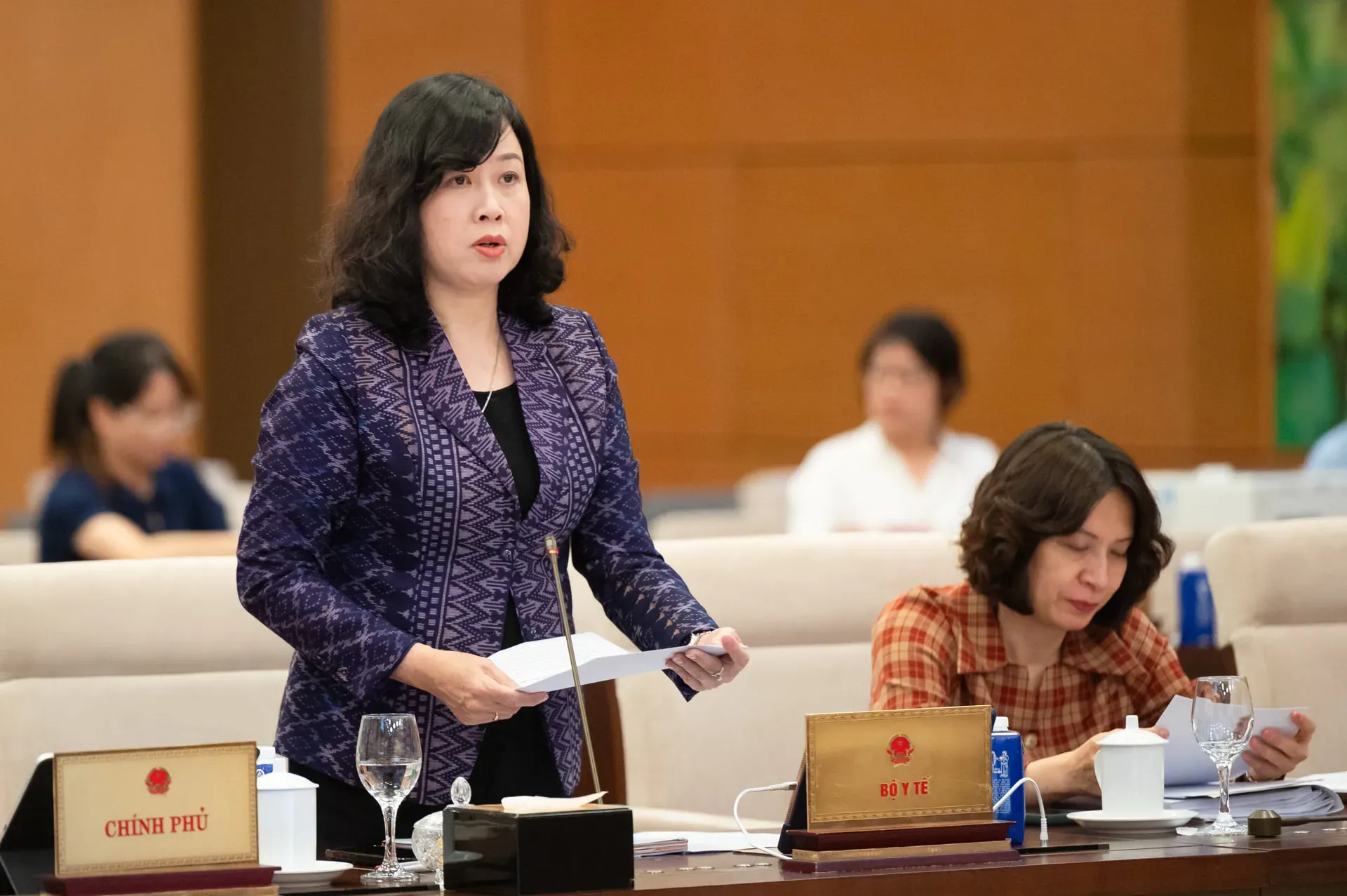Vietnam lifts childbearing limits, marking a crucial step for the future
This change aims to address demographic challenges such as low birth rates and an aging population, paving the way for more sustainable social and economic development in the years ahead.
THE HANOI TIMES — The Standing Committee of the National Assembly on June 3 made a landmark decision by officially repealing the long-standing regulation limiting couples and individuals to having only one or two children.
This policy shift marks a pivotal moment in Vietnam’s population management, reflecting the country’s evolving demographic realities and its ambitions for sustainable growth.
The decision was formalized during the 46th session of the Standing Committee, which approved amendments to Article 10 of the Population Ordinance first issued in 2003 and revised in 2008.

Health Minister Dao Hong Lan said that the updated law empowers couples to freely decide the timing, number, and spacing of their children, considering their age, health, education, work, income, and capacity to raise children - all based on the principle of equality.
Lan said the previous clause restricting couples to “one or two children except in special cases regulated by the government” has been removed.
“This reform aims to tackle growing disparities in birth rates across regions and social groups, and to prevent population decline below the replacement level, a trend that threatens Vietnam’s sustainable economic and social development, as well as its national security and defense in the long term,” said Lan.
Nguyen Dac Vinh, Chairman of the National Assembly’s Culture and Social Affairs Committee, supports this amendment but emphasizes that it is only a preliminary measure.
"We must rapidly finalize a comprehensive Population Law that fully institutionalizes the Party’s population policies and ensures a high-quality legal framework in line with the lawmaking process,” said Vinh.
From 1999 to 2022, Vietnam’s fertility rate remained stable around the replacement level of 2.1 children per woman. However, in the past two years, it has dropped sharply, from 1.96 in 2023 to 1.91 in 2024 - the lowest level in the country’s history.
According to the Ministry of Health, 2024 also marks the third consecutive year that Vietnam’s fertility rate has fallen below replacement level.
The unanimous approval of this amendment by the Standing Committee signals broad recognition that Vietnam’s demographic challenges require more flexible and modern policies, ones that support families and promote balanced growth nationwide. This move also aligns Vietnam with global trends emphasizing reproductive rights and demographic balance.
Vietnam’s population policy, like those of many nations, originally focused on curbing high birth rates to alleviate pressures on infrastructure, education, and healthcare during periods of rapid growth. The “one or two-child” limit was once a sensible approach. However, as Vietnam transitions to a middle-income economy and faces new demographic challenges, this policy has become a barrier rather than a benefit.
Fertility rates across many regions have now dropped below the replacement threshold of 2.1 children per woman. This demographic shift mirrors trends seen in East Asian neighbors such as Japan, South Korea, and China, where declining birth rates have resulted in an aging population, shrinking workforce, and mounting social security burdens.
Rigid child limits risk worsening these issues, especially in rural and less-developed areas experiencing sharp fertility declines. Repealing the birth cap is a proactive step toward stabilizing population growth and balancing demographic changes across diverse regions. It recognizes that a “one-size-fits-all” population policy is no longer viable for a society with varied economic and social landscapes.
Beyond numbers, the new policy affirms couples’ rights to make reproductive decisions freely, respecting their health, income, and individual circumstances. This shift promotes gender equality by removing state interference in family planning and empowering women and families to plan responsibly.
The law’s nuanced focus on factors like education, employment, and child-rearing conditions reflects an understanding that quality of life, not mere population targets, must be the goal. Moving from control to support aligns Vietnam with international human rights standards and advances social equity.
Vietnam’s continued economic growth depends heavily on a productive, youthful workforce. With falling fertility, the country risks a demographic “trap” in which the aging population grows faster than the working-age group. Such imbalance threatens labor supply, innovation, and consumer demand, all critical growth drivers.
Allowing families greater freedom over their reproductive choices helps foster a more balanced population structure. But legal reform alone will not suffice. Vietnam must implement robust policies supporting working parents, including maternity and paternity leave, affordable childcare, accessible healthcare, and flexible workplace practices.

A nurse cares for a pregnant woman at a hospital in Hanoi. Photo: Ha Linh/kinhtedothi.vn
Vietnam’s regions display stark contrasts in fertility rates, economic development, and social infrastructure. Urban hubs like Hanoi and Ho Chi Minh City face low birth rates and aging populations, while some rural provinces confront population decline or uneven growth.
Such legislation will ensure adaptive policies that protect individual and family wellbeing while responding effectively to changing demographic and social conditions.
Vietnam’s removal of the one- or two-child limit is a timely and thoughtful response to a complex demographic landscape. It respects personal choice, addresses pressing economic and social challenges, and lays the groundwork for sustainable development.
The challenge now is to accompany this legal reform with strong social support systems and forward-thinking policies that empower families and secure a vibrant, balanced future for the nation.
|
Experts urge support measures to raise birth rates in Vietnam To boost birth rates, Vietnam must ease the financial burden on families, said Prof. Nguyen Dinh Cu, former Director of the Institute for Population and Social Issues. He proposed policies such as child allowances, free education, tax breaks, housing support, and infertility treatment subsidies. Assoc. Prof. Nguyen Duc Vinh, Director of the Institute of Sociology at the Vietnam Academy of Social Sciences, stressed the need to promote marriage and improve reproductive healthcare for all, including IVF coverage under health insurance. Both experts urged the government to extend maternity leave to 9–12 months and strengthen support for child-rearing within Vietnam’s social welfare capacity. |











